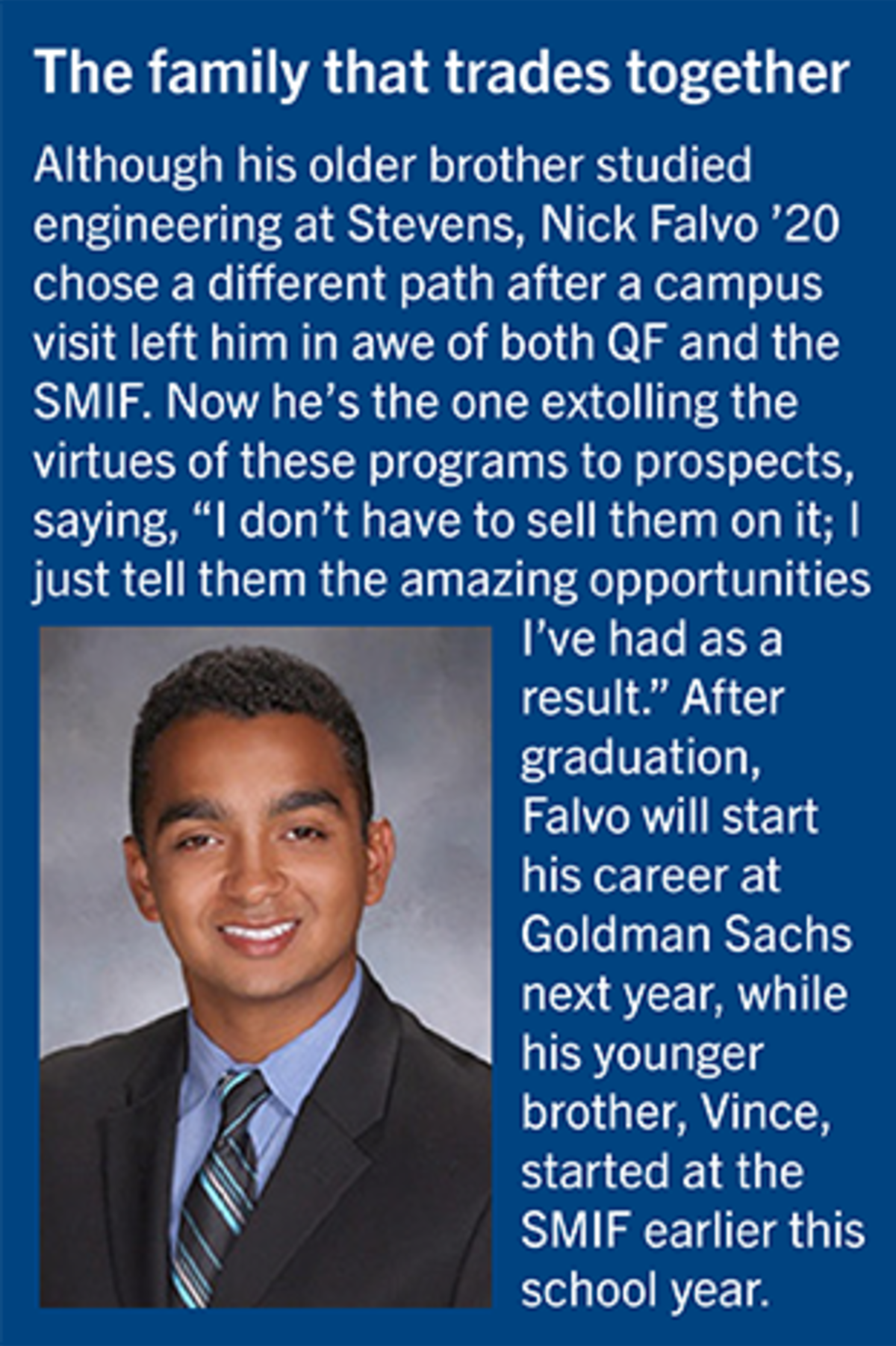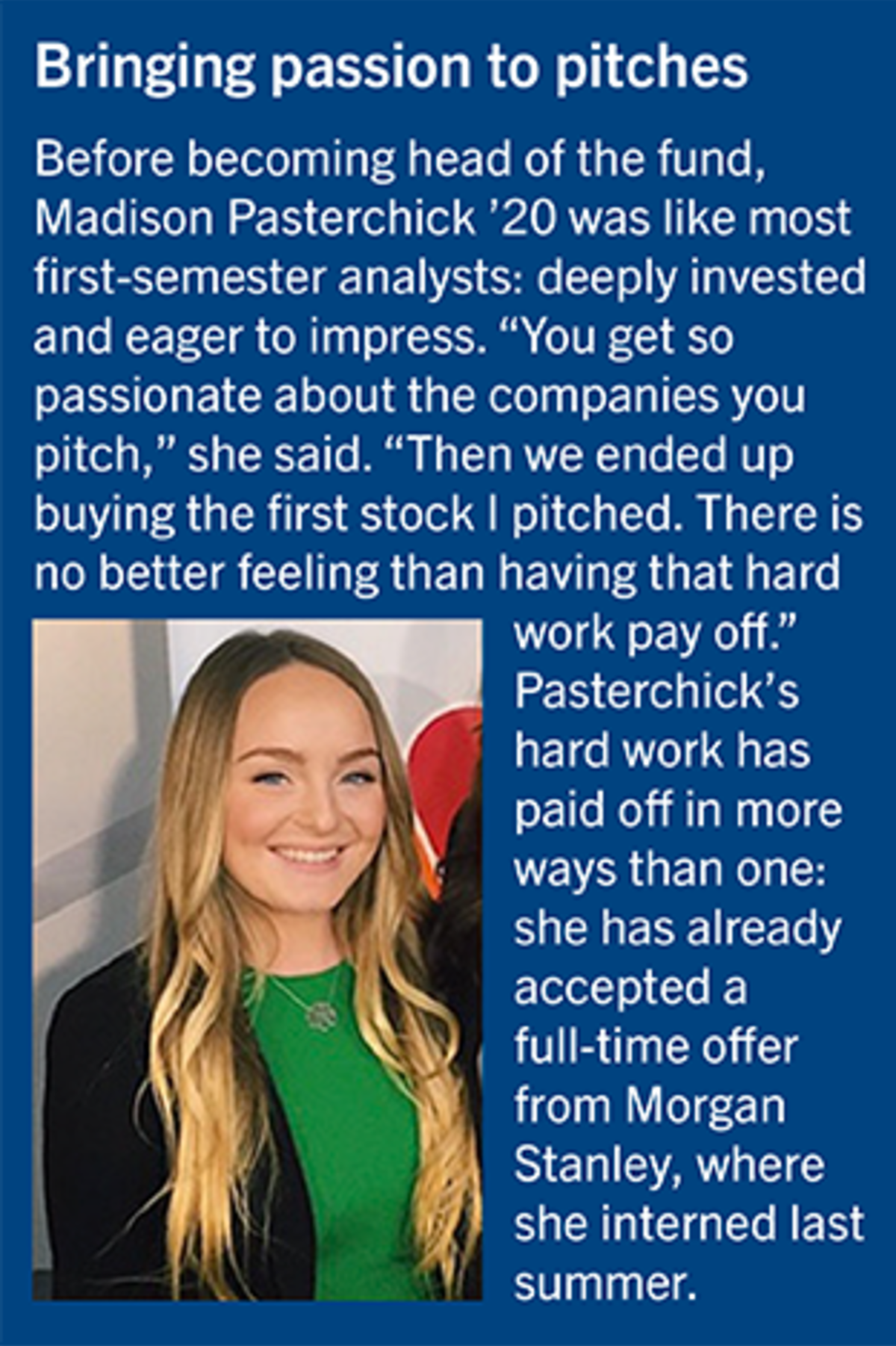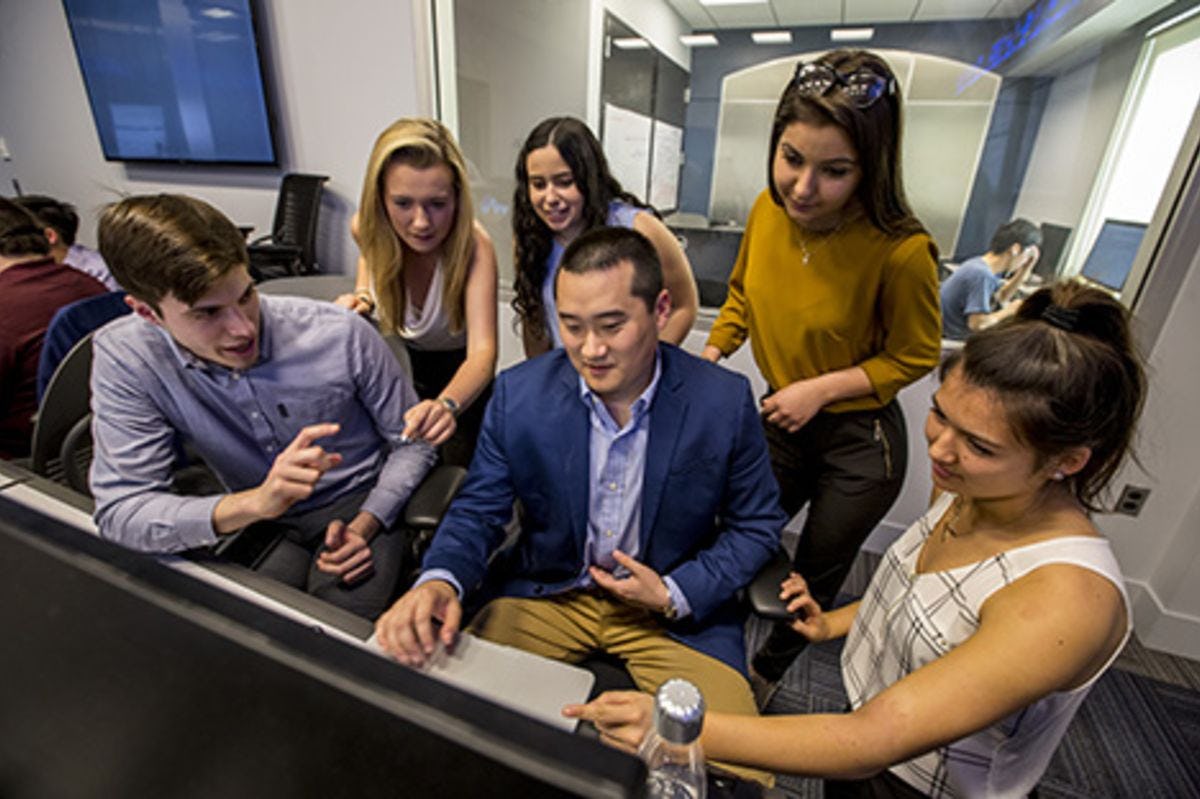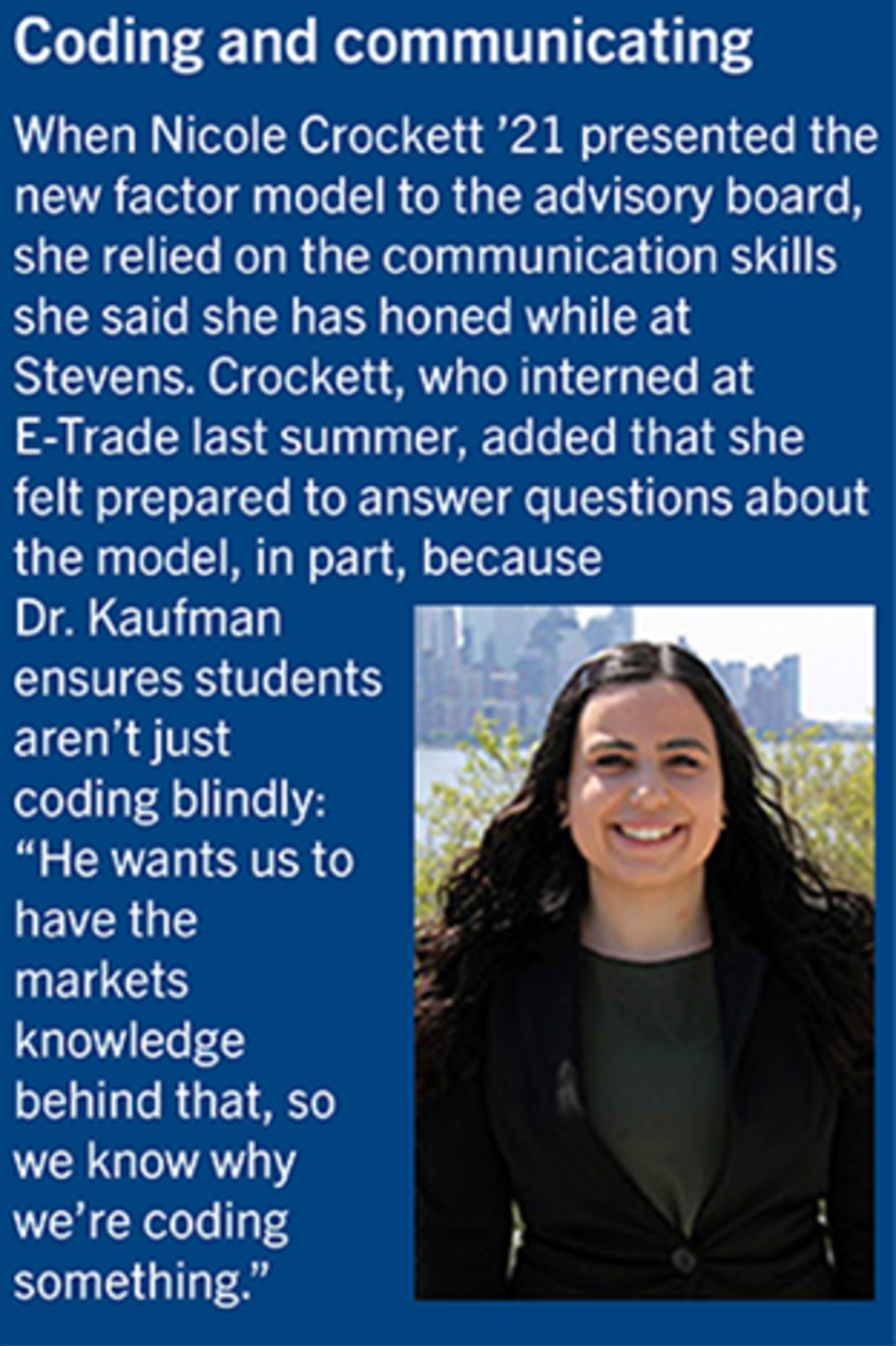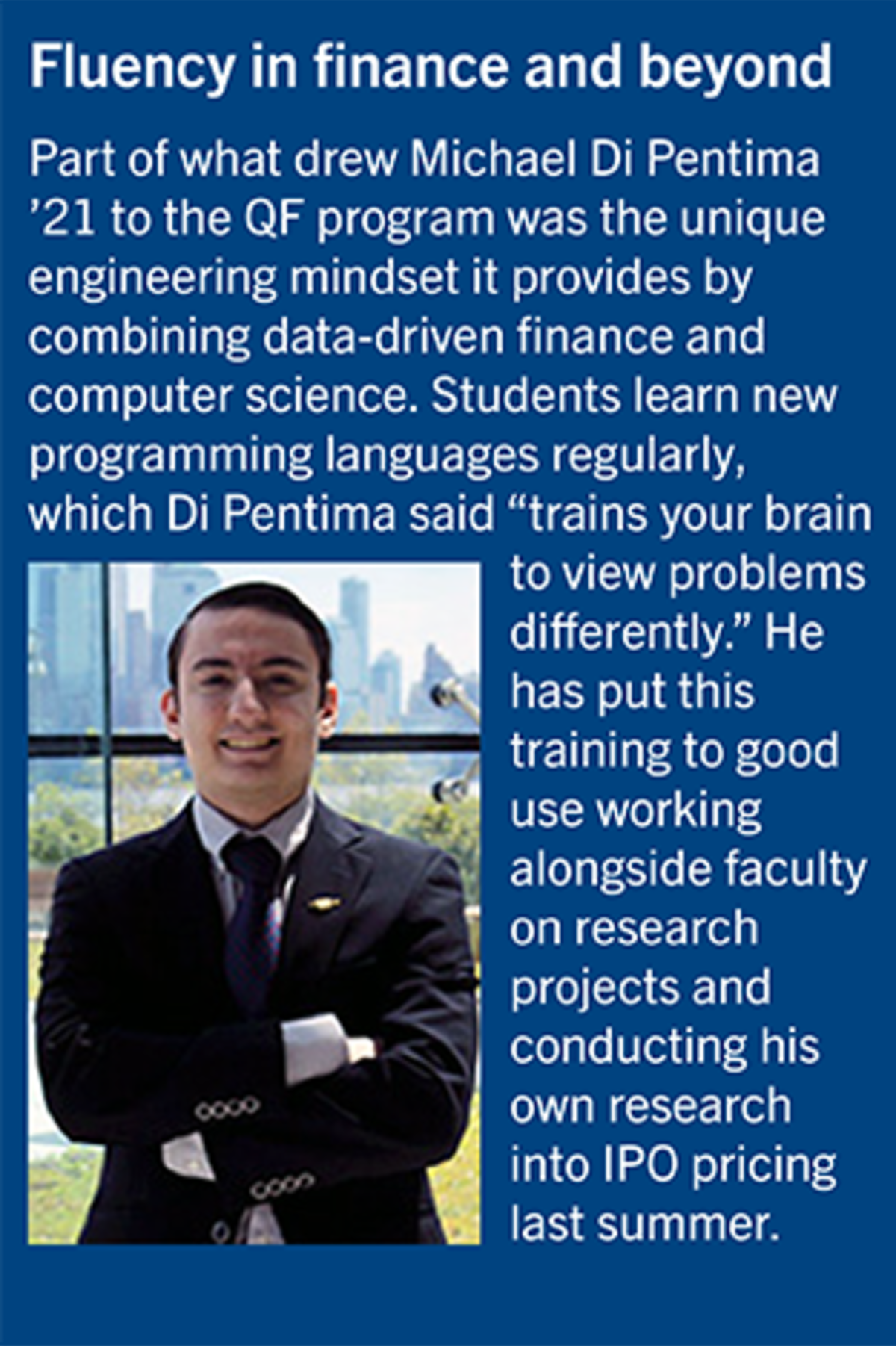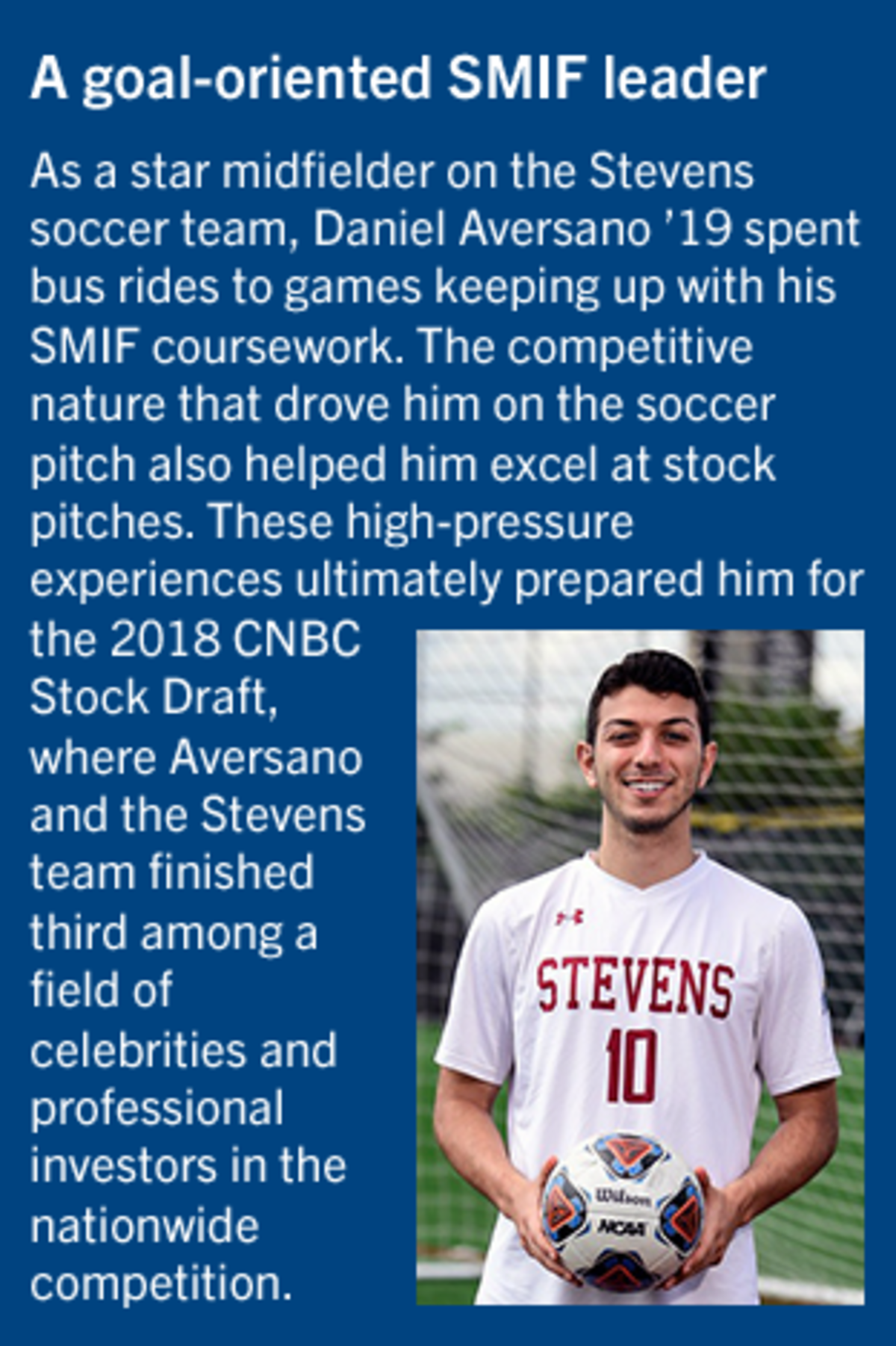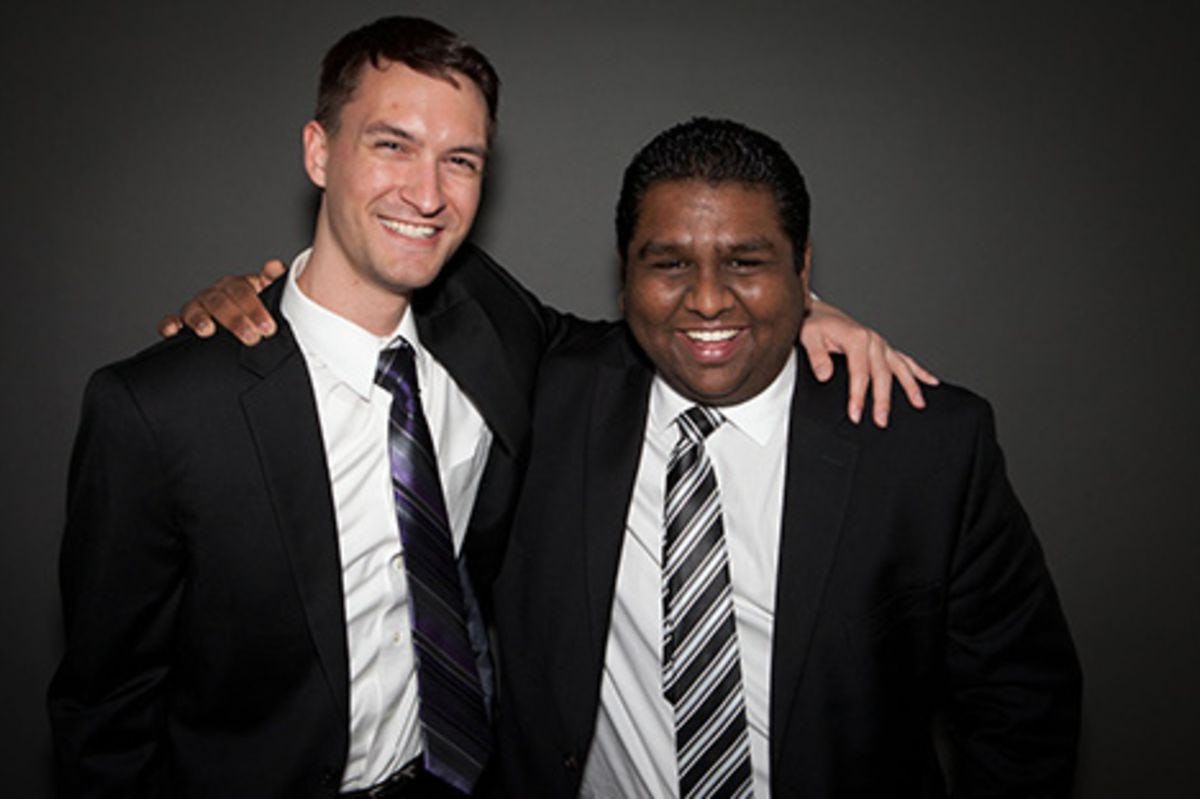Investing in the Future: Student-Run Fund Reaps Returns Through Quantitative Insights
A Selective Class with High Stakes, the SMIF Offers Undergrads a Preview of Life on Wall Street
Huddled in a conference room equipped with the latest financial technologies, an investment fund’s senior management debates a potential addition to their portfolio. The risk team assesses how the new investment will impact their portfolio, while the asset allocation experts ensure the investment is aligned with the fund’s overall quantitative strategy. Portfolio managers and heads of research challenge whether this investment has more upside than another company in the same sector.
It’s the same kind of meeting that occurs at Wall Street firms on a daily basis, but this particular powwow is taking place just across the Hudson River in Hoboken, NJ, where members of the Student Managed Investment Fund at Stevens Institute of Technology are charged with overseeing a portfolio worth nearly half a million dollars.
“Working with that much money is definitely the biggest hurdle to get over at the start,” said Nick Falvo ’20, who was the head of the SMIF in spring 2019. “I’ve never traded with anything close to that in my life, but that’s what makes it so special.”
A unique course of action
The SMIF is a two-semester course within the undergraduate Quantitative Finance program at the School of Business — though students from other majors are welcome to apply — but it operates less like a typical class and more like a simulation of what students can expect from a career on Wall Street.
“What we’re really trying to emphasize is the students teaching each other and the students really managing the fund,” said Dr. Jonathan Kaufman, the SMIF’s faculty advisor. “Students will tell you that they learn more in the SMIF than they do in almost every other class. I think the most important part of that is understanding the responsibility you have to your investors — which, in this case, happens to be the university endowment.”
This format is fairly typical of student-managed funds, which can be found at colleges all over the country. But only a handful of other schools can boast the sort of access to the finance industry that Stevens has.
“On Wall Street, when you have an unfair advantage, you use it,” said Dr. Kaufman, who's also a professional wealth manager. “One of our great advantages is that we are a five-minute PATH ride to Wall Street.”
The quantitative difference
The Stevens SMIF has used this advantage to stack its advisory board with experienced industry leaders, whose input has proven invaluable as the fund has nearly doubled in size since it was introduced in the spring of 2015. It also gives the students the opportunity each semester to visit Goldman Sachs, the brokerage firm for the SMIF, and gain valuable insights into current market trends and potential careers in finance through presentations from the firm’s leadership.
A recent trip to Goldman Sachs helped inspire a new approach to the SMIF’s quantitative strategy, perhaps the most significant differentiator of the Stevens fund.
“I’ve met people who are on student-run investment funds at different schools, and when I tell them there is a quant aspect to ours, they are amazed,” said Nicole Crockett ’21, who was a key member of the quantitative team in the spring and became head of portfolio allocation in the fall. “They really only have the equity side, where students give pitches and then vote on buying that stock. They don’t really have a quantitative side — and they are from schools like Harvard and Princeton.”
Crockett, along with Michael Di Pentima ’21 and Brendon Krupa ’20, were charged with revamping the SMIF’s quantitative strategy by building a new factor model focused on data specific to each of the different sectors within the S&P 500.
The team’s previous model looked at the market as a whole, while the new model will help predict how much to allocate within each sector, based on research that shows how being in the right sector at the right time — even if invested in the wrong company — can greatly influence a fund’s ability to outperform its benchmark.
Though it’s uncommon at most other colleges, the use of quantitative tools is nothing new to Stevens, where business programs emphasize the use of technology in framing complex problems and identifying efficient, effective solutions. From the SMIF’s early days, both Dr. Kaufman and the students were keen to employ the same tactics used by leading investment firms.
“When we were starting the SMIF, we wanted to become a more quantitative fund and develop a methodology for investments, so I was in charge of building out the technology for that,” said Dakota Wixom ’17, M.S. ’17, who is now chief data scientist at Perl Street, a New York City-based fintech startup. “And it’s the exact same thing that Wall Street funds are doing right now — hiring quants to build these same capabilities and systems we built at Stevens.”
Learning to manage investments and teams
The technical piece is impressive, but it’s the students’ leadership and communication skills that have helped them evolve the model, and the SMIF itself, across different classes of students.
“The SMIF is the best learning experience you can get as a business student at Stevens,” said Madison Pasterchick ’20, who was head of the fund during the fall 2018 semester. “You’re managing investments, but as senior leadership, you’re also managing a team. We are very cognizant to pair people who are going to work well together and can build off each other’s strengths.”
According to Di Pentima, this method of organization has panned out well for the factor model team. It gave him the freedom to devote his time to what he does best — coding — while his teammates ensured the quantitative strategy is integrated into the fund; he calls classmate Crockett “the queen of the go-between.”
“She’s great at taking very complex things that I might be spouting out about the model and translating it into something the equity analysts can all understand from a financial viewpoint,” said Di Pentima, who was named the fund’s first head of factor model development in the fall.
Applications and applicability
Students in the SMIF also spearhead the selective application and interview process for the class, choosing the new analysts and the senior leadership.
“We try to take interviews we’ve gone on in New York City for big banks and apply that same process,” said Daniel Aversano ’19, a former head of the fund. “At a minimum, students who aren’t admitted get really good preparation for what they might see during an internship interview.”
Spring 2019 saw the largest pool of applicants yet — 63 students vying for 19 first-semester analyst spots. Those who stay on for a second semester have the option of applying to senior leadership positions. Most students remain connected to the SMIF once they’ve completed their two semesters, providing guidance for the new crop of analysts and managers.
It’s a relationship that extends beyond graduation, as alumni realize how applicable lessons from the SMIF are in the workplace.
“The SMIF provided the foundation that I needed to start my career,” said Ronak Shah ’17, M.S. ’17, an investment banking analyst at Mizuho Securities. “It was single-handedly the best class I’ve taken as an undergraduate. It prepared me for front office positions on Wall Street and also gave me the opportunity to apply all the technical and fundamental skills I had learned my first few years of college.”
The SMIF course provides hands-on experience making difficult choices when the stakes are high. Ultimately, the fund's senior managers make their investment decisions with conviction by relying on their tech tools, market insights and industry connections — but also, their teammates.
“The scale of the SMIF is huge, but when you break it down, we all have our individual roles and areas of expertise,” Falvo said. “The confidence we have in our own knowledge and in each other is the whole reason we’re able to pull the trigger on these trades. It’s always a team effort.”
School of Business Undergraduate business majors Hanlon Financial Systems Center

